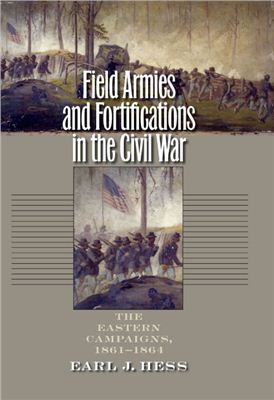The University of North Carolina Press, 2005 - 464 p. ISBN10:
0807829315 ISBN13: 9780807829318 (eng)
The easte campaigns of the Civil War involved the widespread use of field fortifications, from Big Bethel and the Peninsula to Chancellorsville, Gettysburg, Charleston, and Mine Run. While many of these fortifications were meant to last only as long as the battle, Earl J. Hess argues that their history is deeply significant. The Civil War saw more use of fieldworks than did any previous conflict in Weste history.
Hess studies the use of fortifications by tracing the campaigns of the Army of the Potomac and the Army of Northe Virginia from April 1861 to April 1864. He considers the role of field fortifications in the defense of cities, river crossings, and railroads and in numerous battles. Blending technical aspects of construction with operational history, Hess demonstrates the crucial role these earthworks played in the success or failure of field armies. He also argues that the development of trench warfare in 1864 resulted from the shock of battle and the continued presence of the enemy within striking distance, not simply from the use of the rifle-musket, as historians have previously asserted.
Based on fieldwork at 300 battle sites and extensive research in official reports, letters, diaries, and archaeological studies, this book should become an indispensable reference for Civil War historians.
The easte campaigns of the Civil War involved the widespread use of field fortifications, from Big Bethel and the Peninsula to Chancellorsville, Gettysburg, Charleston, and Mine Run. While many of these fortifications were meant to last only as long as the battle, Earl J. Hess argues that their history is deeply significant. The Civil War saw more use of fieldworks than did any previous conflict in Weste history.
Hess studies the use of fortifications by tracing the campaigns of the Army of the Potomac and the Army of Northe Virginia from April 1861 to April 1864. He considers the role of field fortifications in the defense of cities, river crossings, and railroads and in numerous battles. Blending technical aspects of construction with operational history, Hess demonstrates the crucial role these earthworks played in the success or failure of field armies. He also argues that the development of trench warfare in 1864 resulted from the shock of battle and the continued presence of the enemy within striking distance, not simply from the use of the rifle-musket, as historians have previously asserted.
Based on fieldwork at 300 battle sites and extensive research in official reports, letters, diaries, and archaeological studies, this book should become an indispensable reference for Civil War historians.

